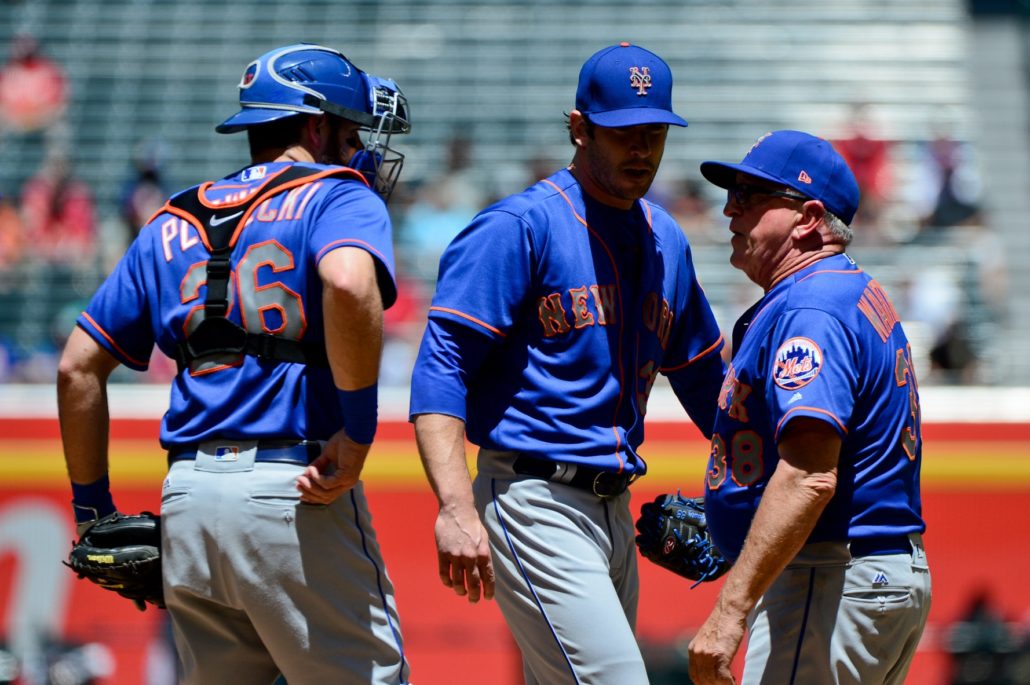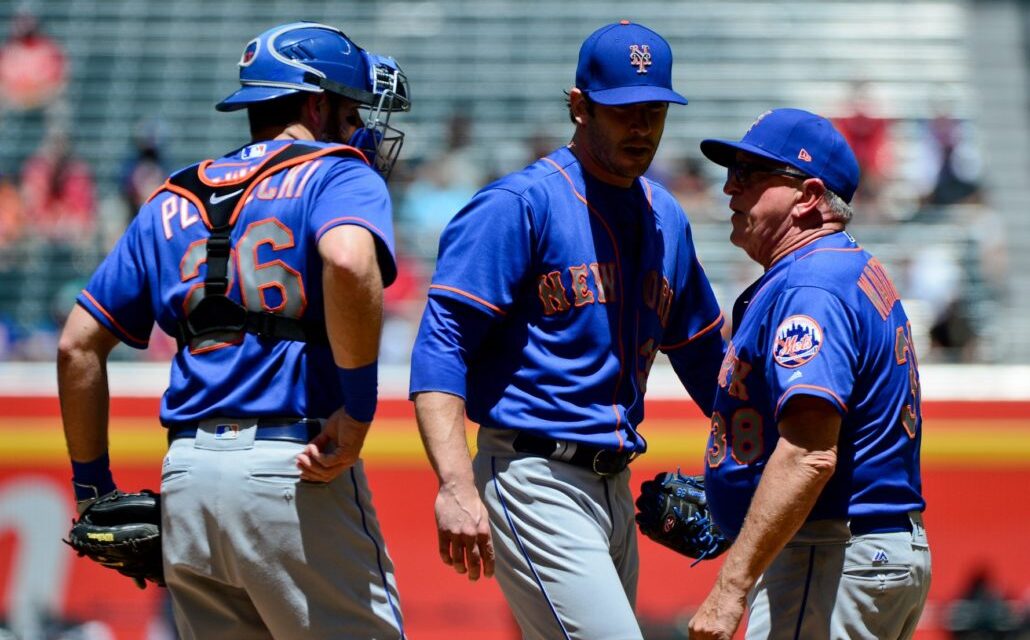
The 2017 New York Mets are 38-45 and sit 11.5 games behind the first-place Washington Nationals in the National League East. This was unexpected going into the season after two straight playoff appearances and a team ready to compete.
However, after a numerous amount of injuries, the Mets had and still have too many holes at important positions.
Regardless of the injuries, hitting has not been the problem. The Mets have scored 399 runs and have hit 126 home runs which ranks 13th and sixth in the majors, respectively. The pitching has been the real problem as the Mets rank 28th with a 4.92 ERA. Looking deeper, a reason for this poor pitching could be the high walk rates among Mets pitchers.
Mets pitchers have issued 310 walks in 2017 which is the fourth highest mark in the majors. The three teams that have given up more walks than the Mets are the Baltimore Orioles, Miami Marlins, and Cincinnati Reds. Ironically enough, the Orioles and Reds are the only teams which have higher ERAs than the Mets. As for the Marlins, they don’t fair that much better as they are ranked 21st with a 4.63 ERA.
It’s not impossible to receive quality pitching while giving up a lot of walks, but it is very difficult to do. If the Mets can stop giving out free passes at alarming rate, it’s realistic to turn around their pitching, and possibly their season. Before doing this, the Mets need to pinpoint where the problem is coming from.
“People that are walking out to the mound are not the same quality that we’ve been used to,” Dan Warthen said according to NorthJersey.com.
Warthen has a point here, but only to an extent. Two of those pitchers he referred to were Noah Syndergaard and Bartolo Colon.
In 2016, Syndergaard only walked 43 batters in 183.2 innings and Colon only walked 32 in 191.2 innings. While the loss of Syndergaard is major, not having Colon doesn’t really matter this year. Colon was recently designated for assignment by the Atlanta Braves after going 2-8 with an 8.14 ERA. That included 20 walks in 63 innings. His walk rate of 2.9 walks per nine innings was his highest since 2009 when he had a 3.0 rate.
What Warthen and the Mets have to realize is that almost every pitcher who was on the team in 2016 has been walking more batters in 2017.
Jacob deGrom, Robert Gsellman, Fernando Salas, Jerry Blevins, Steven Matz, and Josh Smoker all have higher walks per nine rates in 2017 with the Mets than they had in 2016 with the Mets. Before going down with injury, Syndergaard, Matt Harvey, and Jeurys Familia all had worse walk rates this season as well.
Josh Edgin, Addison Reed, and Rafael Montero are the only Mets on the team currently with better rates than 2016 while Seth Lugo has the same rate as last year. In Montero’s case, dropping his walk rate from 7.6 to 5.4 could hardly be considered an accomplishment.
To give a little context, the Mets were tied with the San Francisco Giants for giving up the least number of walks (439) in 2016. How does a team with many of the same pitchers from the year prior, struggle so mightily with giving opposing batters free passes?
“When you don’t have Syndergaard and Colon on the mound, you’re going to walk more,” Warthen said.
It’s hard to use that excuse when so many of the other pitchers on the team have experienced spikes in their walk rates after one season.
“We’ve asked our bullpen to be put in different roles than what they anticipated being in,” Terry Collins said according to NorthJersey.com. “That creates some issues also.”
Similar to Warthen’s excuse, Collins isn’t wrong, but he still isn’t getting to the heart of the problem. Singles, doubles, triples, and home runs aren’t avoidable, but walks are. Collins and Warthen should challenge every one of their pitchers to avoid giving out free passes. They should attack hitters and take their lumps as they come. Fans will be frustrated when pitchers are giving up hits to lose games, but nothing is more frustrating than seeing an opposing team win courtesy of a base on balls.
















